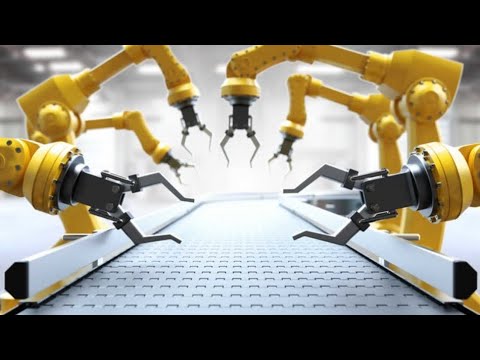Industrial Robots in Manufacturing: Revolutionizing the Production Process
Industrial automation has come a long way in recent years, with the emergence of advanced technologies like robotics paving the way for increased productivity and efficiency in manufacturing industries. Among these cutting-edge innovations, industrial robots have garnered significant attention for their ability to perform complex tasks with precision and accuracy. In this article, we will explore the top five industrial robots working in various industries, highlighting their exceptional capabilities and impact on the manufacturing sector.
**Industrial Robots You Must See: Revolutionizing Manufacturing Processes**
1. **Robotic Packaging System:**
One of the most crucial aspects of the manufacturing process is packaging, as it not only ensures product safety but also enhances brand image. The Robotic Packaging System is designed to streamline and automate packaging operations, delivering high-speed and high-quality results. With the ability to handle multiple packaging materials and sizes, this industrial robot can adapt to various production requirements, making it an indispensable asset in manufacturing facilities.
2. **Low-Cost Robotics:**
Affordability and accessibility are key considerations for manufacturers, especially for small and medium-sized enterprises. Low-cost robotics has emerged as a game-changer in the industry, enabling businesses to leverage advanced automation technologies without significant financial burdens. These robots offer a wide range of capabilities, including assembly, material handling, and quality control, empowering companies to enhance their productivity while remaining competitive in the market.
3. **Collaborative Robots:**
Collaborative robots, also known as cobots, have transformed the landscape of industrial robotics by revolutionizing human-robot collaboration. Unlike traditional industrial robots that are kept behind safety cages, cobots are designed to work alongside human operators, creating a more flexible and efficient working environment. These robots excel in tasks that require dexterity and intricate movement, such as assembly and pick-and-place operations. With built-in safety features, collaborative robots prioritize worker safety while optimizing productivity.
4. **Mobile Robotics:**
In an era driven by technological advancements, mobility has become a critical factor in industrial robotics. Mobile robots, equipped with navigation systems and sensors, can seamlessly navigate through a manufacturing facility, performing a wide range of tasks. From material transportation to inventory management, these robots are highly flexible and adaptable, providing manufacturers with enhanced efficiency and reduced downtime. This innovation has revolutionized the production process, eliminating the need for fixed automation systems and allowing for optimal use of floor space.
5. **Automated Guided Vehicles (AGVs):**
The integration of automated guided vehicles in manufacturing facilities has transformed the way materials are transported. These self-driving vehicles can navigate predefined paths, transporting materials safely and efficiently. AGVs are widely used in industries that require frequent material movement, such as automotive manufacturing and logistics. With their ability to operate 24/7 and optimize the flow of materials, these robots have significantly improved overall productivity and reduced manual labor costs.
The increasing adoption of industrial robots in manufacturing industries has led to significant improvements in productivity, efficiency, and safety. By automating repetitive and labor-intensive tasks, these robots free up human operators to focus on more complex and value-added activities, thereby unleashing their full potential. Moreover, the precision and accuracy exhibited by industrial robots minimize errors and rework, leading to enhanced product quality and customer satisfaction.
In conclusion, the industrial robots discussed in this article represent a paradigm shift in the manufacturing landscape. From robotic packaging systems to mobile robots and collaborative robots, each innovation caters to specific industrial needs, providing manufacturers with unprecedented possibilities for growth. As the manufacturing sector continues to embrace automation technology, the role of industrial robots in streamlining processes, increasing productivity, and achieving cost-effective solutions will continue to expand. It is evident that the future of manufacturing lies in the hands of these remarkable machines, and their impact on the industry is set to be nothing short of revolutionary.
References:
– TOP 5 INDUSTRIAL ROBOTS WORKING IN INDUSTRIES | Industrial Robots you must see [YouTube video]. Retrieved from: “`[link to the video]“`
– Industrial Robots in Manufacturing [Website]. Retrieved from: “`[link to website]“`
Industrial Robot
“Revolutionizing Industries: The Evolution of Industrial Robots in Manufacturing”


